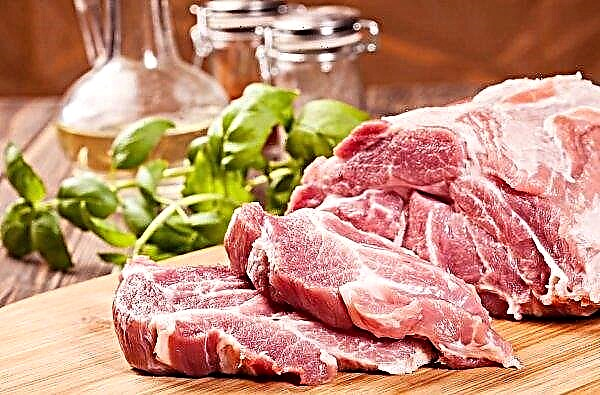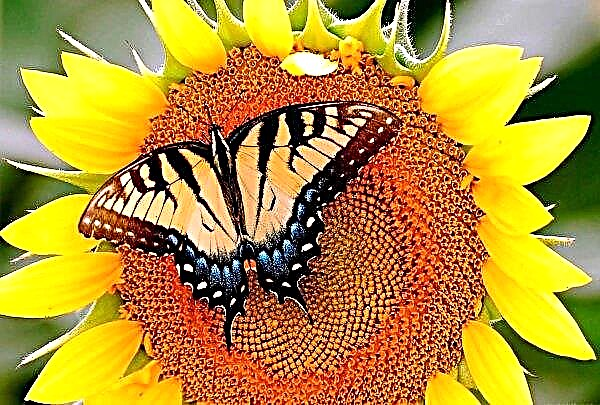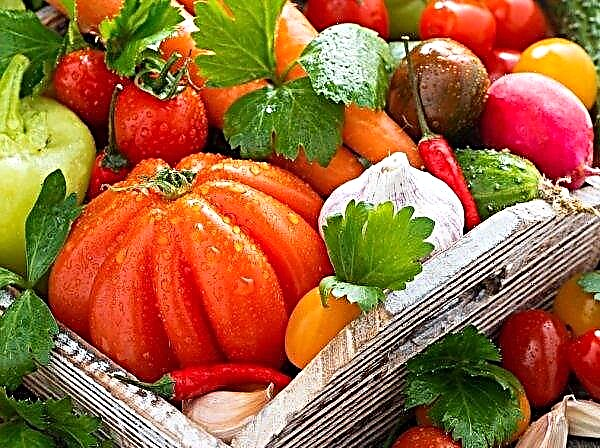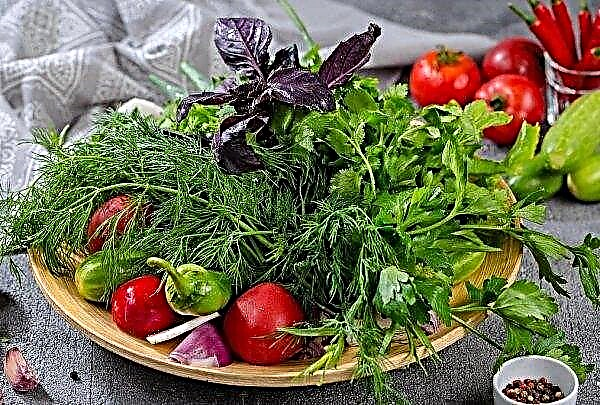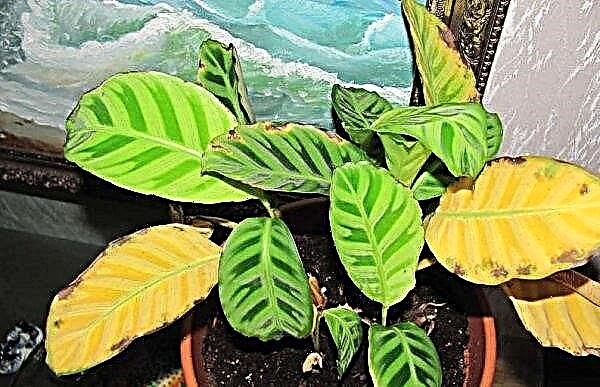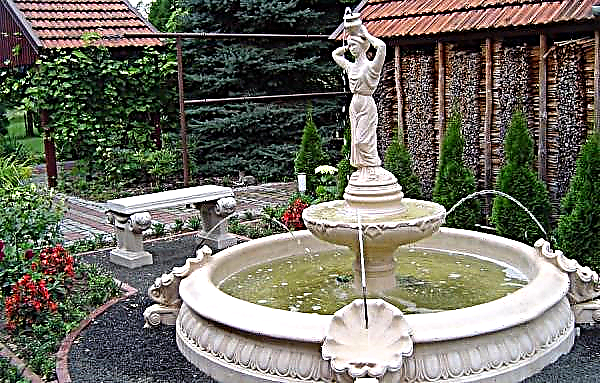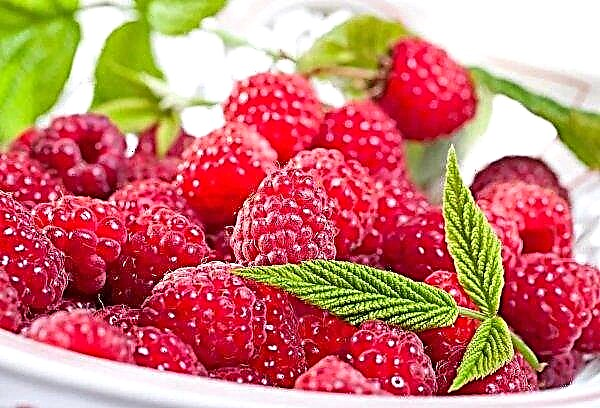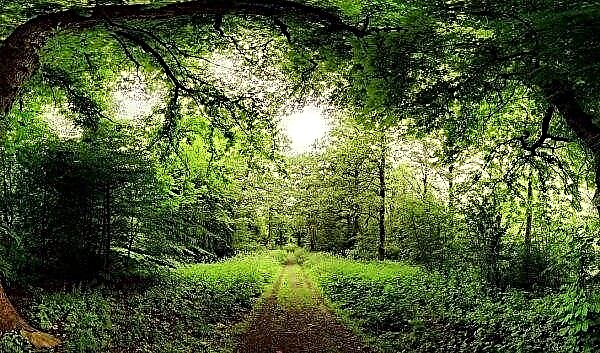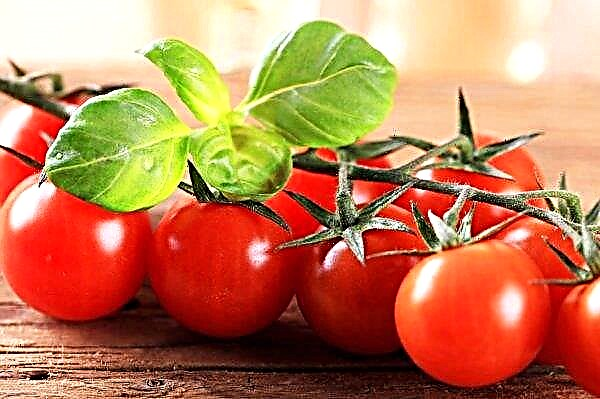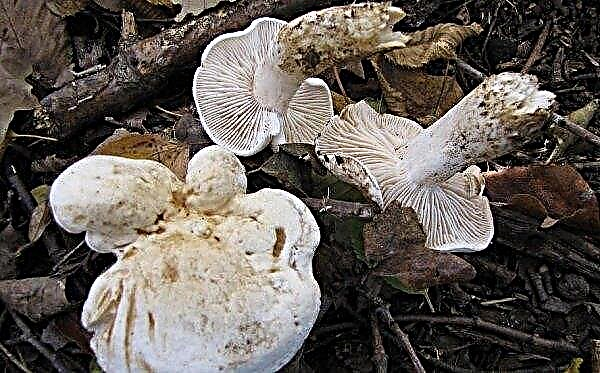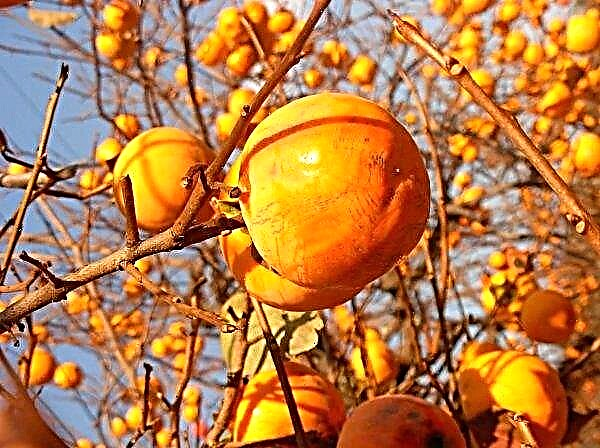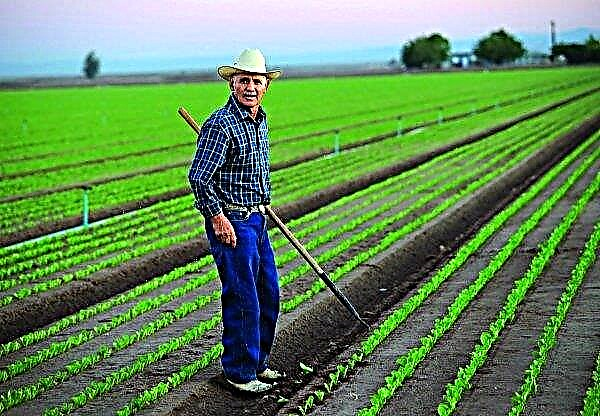Growing cucumbers in a greenhouse requires knowledge and skills. Information on why the flower is formed on bushes in the greenhouse, and what to do when such a situation arises, as well as how to prevent it, is collected in the article below.
Why are there many empty flowers in the greenhouse on cucumbers?
To know how to solve the problem of the appearance of a large number of barren flowers on cucumbers cultivated in greenhouses, one should understand why this happens.
Possible reasons:
- sowing poor-quality planting material;
- ignoring recommendations on the minimum distance between landing holes;
- cold;
- lack of light;
- violation of the moisture regime;
- incorrect pollination.
Did you know? Cucumbers were cultivated by humans 6 thousand years ago. In their homeland - in India - they are still found in the wild today. Wild cucumbers are unsuitable for food.
Selection of low-quality seeds for planting
The quality of planting material affects the future crop. When buying seeds, choose those that are suitable for cultivation in a greenhouse, for example: Valaam, Amur F1, Emerald F1, Romance F1, Orpheus F1, Sarovsky F1.
Pay attention to the expiration date of planting material. It is better to stop the selection on older seeds that have been stored for longer than 2–4 years. Freshly picked seeds will give plants with a large number of barley. If the seeds are purchased “by hand”, and there is no way to know when they are collected, pre-plant them.
If the seeds are purchased “by hand”, and there is no way to know when they are collected, pre-plant them.
To do this, you must:
- Soak the seed in warm water for 2 days or wrap it in wet gauze, periodically spraying from the spray gun.
- Place the seeds in warm conditions, for example, near a heater. You can calcine the seeds in the oven at a temperature of +60 ... + 80 ° C for 2 hours.
Some varieties require hardening of seeds by creating a temperature difference - first keep them warm, and then - in the cold. As a result, plants will grow with a strong immune system and a good level of fruiting.
Seeding too tight
Cucumbers have a developed vegetative system. Therefore, the recommended seed density is always indicated on the seed packaging or in the description of the variety. Do not neglect these recommendations and place a larger number of plants per 1 m², as this will negatively affect their growth, development and fruiting.
On 1 m², it is recommended to plant no more than 2-3 bushes. Between them there should be a minimum distance of 30 cm, between rows - 90 cm.
Lack of heat
Cucumbers are heat-loving plants. The recommended air temperature for growing this garden plant is from +22 to + 24 ° С, during the period of the appearance of fruits - + 23 ... + 26 ° С. The permissible temperature difference is 6 degrees. Lowering the temperature below + 12 ... + 14 ° C is fatal.
Soil temperature should be at the level of + 25 ... + 30 ° С. A temperature of + 13 ° C is considered critically low. It is important to place cucumber bushes on warm high beds.
Wrong watering
Cucumbers need regular watering, they are harmful because of the lack of moisture. It is recommended to moisten the bushes up to 5 times a week. In this case, it is important not to overdo it, so as not to flood the soil. After all, it is precisely waterlogging that leads to the formation of a void.
Also, irrigation with cold water can lead to this problem. It is necessary to make it a rule to use only warm water for humidification - heated to a temperature of + 25 ° C.
To prevent problems, you need to immediately respond to waterlogging. A temporary refusal of watering, frequent airing can help in this situation, which will contribute to the drying of the earth, mulching of beds with straw or dry grass.
Important! In order to provoke the active formation of female flowers, during the flowering period, the number of waterings should be reduced.
The location of beds in a dark place
Cucumbers need a lot of light. Lighting in the greenhouse should be for 12 hours a day. If the street has been cloudy for a long time, it is advisable to spray with “anti-stress” drugs (Epin-Extra, Zircon).
Lack of pollination
Among modern cucumber varieties and hybrids, the main part is parthenocarpic specimens, that is, those that have both male and female flowers, and, therefore, are pollinated independently. You can learn about this characteristic from the description of the variety on the packaging.
If the variety is not such, for pollination it needs insects or pollinating plants. Thus, a person needs to take care to plant several bushes of cucumbers that have male flowers, to attract insects in the greenhouse that can pollinate, or to pollinate manually with a brush.
Otherwise, pollination will not occur, or there will be a large amount of barley. Such an option is also possible when the owner of the greenhouse has met all the conditions, but pollination is still weak, and the quantity of empty flowers is large.
Insufficient pollination can occur for several more reasons:
- in case of stagnation of air in the greenhouse;
- with thickened landings;
- at too high temperatures in the greenhouse.
Important! Pollen becomes sterile if the temperature in the greenhouse rises above +30 ... + 35 ° C, which means pollination does not occur. It is necessary to ensure that this temperature threshold is not overcome.
Lack or oversupply
A lot of energy is spent on the formation of flowers and the formation of ovaries in a plant, which means that during these periods it needs a sufficient amount of nutrients. If a plant lacks minerals, it may not form ovaries.
Regular fertilizer application for cucumbers is a must. It is not worth neglecting it, as this guarantees the correct growth, development of the plant and a successful plentiful harvest.
When applying fertilizers, the rules should be followed:
- Take into account the needs of the plant in certain elements at different stages of development. Before flowering, nitrogen is needed for the active growth of green mass. During the formation of ovaries and fruiting, potassium and phosphorus-containing fertilizers come first. Nitrogen-containing top dressing during the formation of ovaries is harmful because it prevents the formation of inflorescences.
- Feed the soil in the greenhouse 4–5 times per seasonby combining or alternating mineral (urea, superphosphate, ammonium nitrate, nitrophosphate) and organic fertilizers (biohumus, chicken droppings in liquid form, rotted manure, compost, mullein) with the main emphasis on the latter.
- Top dressing should be combined with watering and soil care - loosening and weeding. Lack of watering threatens to burn the roots. Dense soil without loosening is not able to carry mineral substances to the roots. If weeding is not carried out, there is a risk that valuable elements absorb weeds.
What to do if there are a lot of empty flowers on cucumbers?
The solutions to the problem depend on the cause. The first thing the greenhouse owner needs to do is to check the microclimate parameters (temperature, humidity, lighting) and bring them back to normal.

In the future, perform the following actions:
- Set the watering mode in accordance with the recommendations.
- Make a competent feeding schedule.
- Thin out planting, if necessary.
- Make additional pollination.
- Dry the soil if it is flooded.
- If there is an excess of nitrogen in the soil, fertilize with superphosphate (2 tbsp. L / 10 l of water) or an aqueous solution of wood ash (0.5 l / 10 l of water).
- Create a stressful situation for the plant by alternating watering and drought: water the bushes for 3-4 days, then arrange a dry period for 3-4 days.
Preventive measures
To avoid the formation of a large amount of hollow, you must:
- Select seeds no younger than 2-4 years old.
- Warm and soak planting material before sowing.
- Organize good lighting in the greenhouse.
- As necessary, thin out plantings.
- Before flowering, pinch the tops of the shoots over the fifth or sixth leaf.
- Before flowering and during flowering, fertilize with yeast (10 g / 10 l of water); mullein (1:10 with water) with urea (5 g); baking soda (2 tbsp. l / 10 l of water).
- Tie up your whips regularly.
Do I need to remove the nettle from cucumbers?
Experienced gardeners and experts argue that it is not necessary to remove the barren flower. These are male flowers with pollen, which can still be useful for pollination in the formation of female flowers. You can activate the development of female flowers by pinching.
Did you know? The longest cucumbers in the world belong to the Chinese species. They reach a length of 1.5-1.8 m. These plants in China and Japan are cultivated on the roofs of houses, and then transplanted into open ground.
Any owner of a greenhouse may encounter a large number of barren flowers on cucumber bushes if they ignore the creation of optimal conditions, planting and care recommendations, and select poor-quality seeds.

